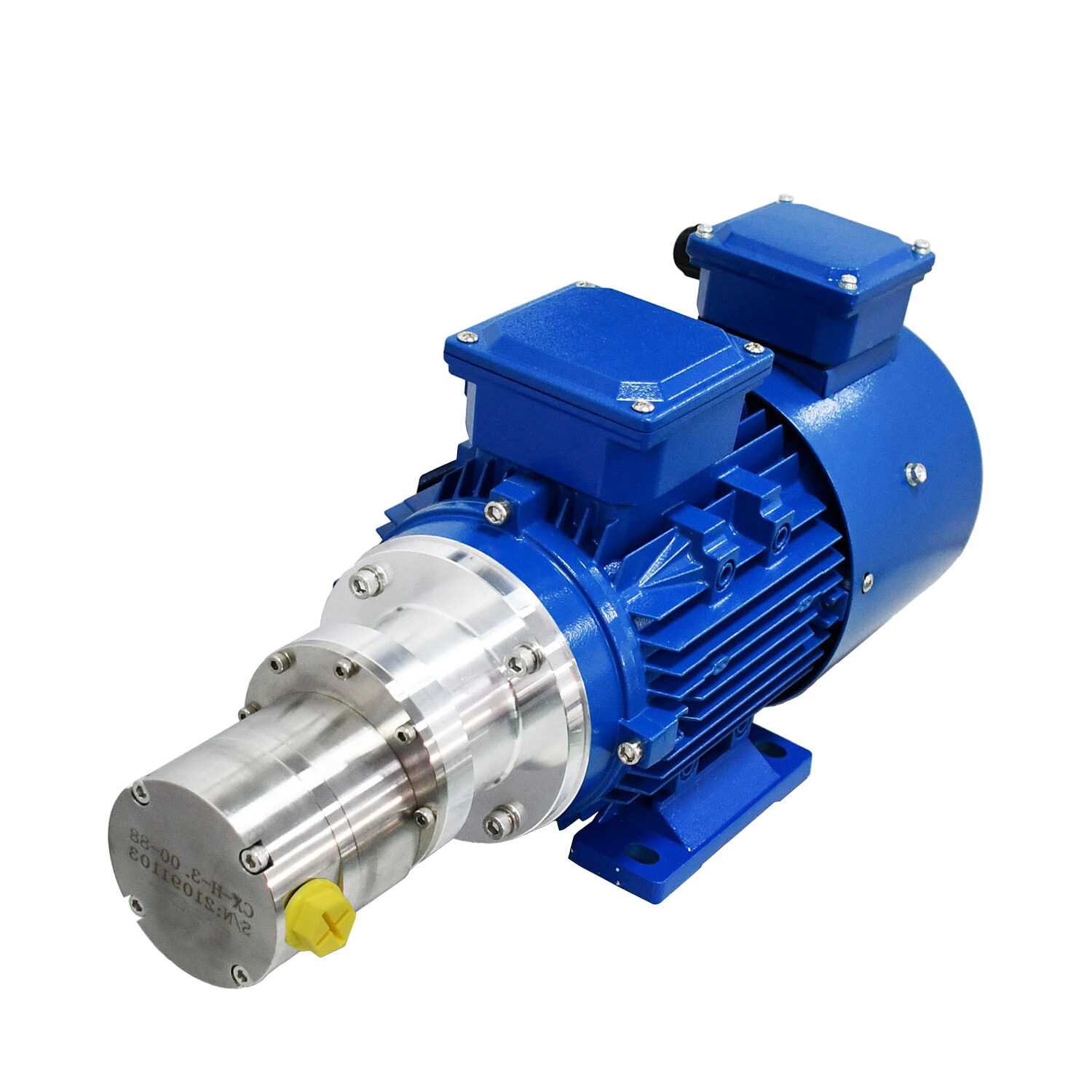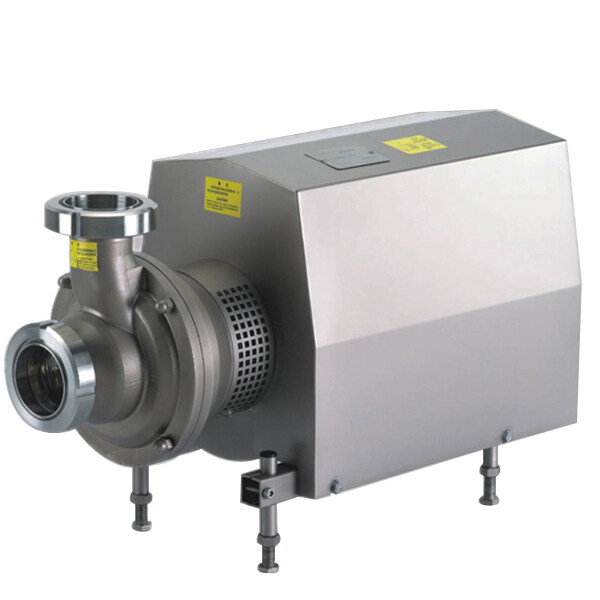Email format error
Email cannot be empty
Email already exists
6-20 characters(letters plus numbers only)
The password is inconsistent
Email format error
Email cannot be empty
Email does not exist
6-20 characters(letters plus numbers only)
The password is inconsistent


Sanitary centrifugal pumps are essential equipment in various industries, ensuring the hygienic transfer of fluids. These pumps are specifically designed to meet the stringent cleanliness requirements of industries such as food and beverage, pharmaceutical, biotechnology, and cosmetics. In this blog post, we will delve into the features, applications, and benefits of sanitary centrifugal pumps, highlighting their significance in maintaining sanitary conditions during fluid transfer processes.
I. Understanding Sanitary Centrifugal Pumps
What are Sanitary Centrifugal Pumps?
The pumps are a type of pump specifically designed for applications that demand high levels of cleanliness and hygiene. They are constructed using materials that are resistant to corrosion and can withstand frequent cleaning and sterilization processes.
Components and Working Principle of Sanitary Centrifugal Pumps
The pumps consist of several key components, including an impeller, casing, shaft, and motor. The impeller rotates within the casing, creating centrifugal force that propels the fluid through the pump. The pump’s design ensures smooth and efficient fluid transfer while minimizing the risk of contamination.
Key Features that Differentiate Sanitary Centrifugal Pumps
The pumps are equipped with features that set them apart from conventional pumps. These features include:
Hygienic design: The pumps are designed with smooth surfaces, minimal dead spaces, and easy-to-clean components, ensuring thorough cleaning and preventing the buildup of bacteria or contaminants.
Seal options: The pumps offer various seal options, including single or double mechanical seals, to prevent leakage and maintain product integrity.
CIP (Clean-in-Place) capabilities: These pumps are designed to facilitate easy cleaning and sterilization using CIP systems, reducing downtime and ensuring optimal hygiene.
II. Applications of Sanitary Centrifugal Pumps
Food and Beverage Industry
a. Ensuring Hygienic Fluid Transfer in Dairy Processing
The pumps are widely used in dairy processing, where maintaining hygienic conditions is crucial. These pumps handle the transfer of milk, cream, yogurt, and other dairy products, ensuring product integrity and preventing contamination.
b. Maintaining Sanitary Conditions in Beverage Production
In the beverage industry, the pumps play a vital role in transferring liquids such as juices, soft drinks, and alcoholic beverages. Their hygienic design and CIP capabilities ensure the preservation of product quality and prevent cross-contamination.
Pharmaceutical Industry
a. Critical Role of Sanitary Centrifugal Pumps in Drug Manufacturing
Pharmaceutical manufacturing requires strict adherence to hygiene standards. Thel pumps are used to transfer various fluids, including active pharmaceutical ingredients (APIs), solvents, and cleaning agents, while maintaining a sterile environment.
b. Meeting Stringent Hygiene Standards in Pharmaceutical Processes
The pumps are crucial in processes such as filtration, chromatography, and formulation, where maintaining aseptic conditions is essential. These pumps ensure the integrity of the final product and minimize the risk of contamination.
Biotechnology and Cosmetics Industry
a. Hygienic Fluid Transfer in Bioprocessing
In biotechnology, the pumps are used for transferring sensitive fluids such as cell cultures, fermentation media, and biopharmaceuticals. Their hygienic design and gentle pumping action help maintain the viability and integrity of the biological materials.
b. Maintaining Product Integrity in Cosmetic Manufacturing
The pumps are employed in the cosmetics industry for transferring ingredients such as lotions, creams, and fragrances. These pumps ensure the preservation of product quality and prevent contamination, meeting the high hygiene standards of the industry.
III. Benefits of Sanitary Centrifugal Pumps
Enhanced Cleanability and CIP (Clean-in-Place) Capabilities
The pumps are designed for easy cleaning and sterilization. Their smooth surfaces, minimal dead spaces, and CIP capabilities allow for thorough cleaning, reducing the risk of contamination and ensuring product integrity.
Reduced Risk of Contamination and Product Spoilage
The hygienic design minimizes the risk of contamination during fluid transfer. By preventing the buildup of bacteria or contaminants, these pumps help maintain product quality and extend shelf life.
Improved Efficiency and Cost-effectiveness
The pumps offer high efficiency and reliability, resulting in reduced energy consumption and maintenance costs. Their robust construction and optimized design ensure smooth operation and minimize downtime.
Compliance with Regulatory Standards and Certifications
The pumps are designed to meet stringent regulatory standards, such as FDA and EHEDG guidelines. Using these pumps ensures compliance with hygiene and safety regulations, providing peace of mind to industries that prioritize cleanliness.
IV. Factors to Consider When Choosing Sanitary Centrifugal Pumps
Material Selection for Optimal Fluid Compatibility
Selecting the right materials for the pump’s components is crucial to ensure compatibility with the fluids being transferred. Stainless steel, for example, is commonly used due to its corrosion resistance and ease of cleaning.
Pump Design and Construction for Easy Maintenance
Consider the ease of maintenance and accessibility of components when choosing a sanitary centrifugal pump. A well-designed pump with easily replaceable parts can minimize downtime and reduce maintenance costs.
Flow Rate and Pressure Requirements
Evaluate the flow rate and pressure requirements of your specific application to select a pump that can meet these demands. Oversizing or undersizing the pump can lead to inefficiencies and potential issues.
Energy Efficiency and Sustainability Considerations
Look for pumps that offer energy-efficient features, such as variable speed drives, to optimize energy consumption. Additionally, consider the pump’s environmental impact and sustainability features, such as recyclability and reduced water usage.
V. Maintenance and Troubleshooting Tips for Sanitary Centrifugal Pumps
Regular Inspection and Cleaning Procedures
Implement a regular maintenance schedule that includes inspection and cleaning procedures to ensure the pump’s optimal performance. Regularly check for wear and tear, clean the pump thoroughly, and replace any damaged or worn-out parts.
Common Issues and Troubleshooting Techniques
Familiarize yourself with common issues that can arise with sanitary centrifugal pumps, such as cavitation, leakage, or reduced flow rate. Learn troubleshooting techniques to address these issues promptly and effectively.
Importance of Proper Pump Installation and Alignment
Proper installation and alignment of the pump are crucial for its efficient operation. Follow the manufacturer’s guidelines and ensure the pump is correctly aligned with the piping system to prevent issues such as vibration or premature wear.
Conclusion:
Sanitary centrifugal pumps are indispensable tools for industries that prioritize cleanliness and hygiene in fluid transfer processes. Their hygienic design, CIP capabilities, and numerous benefits make them the ultimate solution for maintaining sanitary conditions and ensuring product integrity. By understanding the features, applications, and maintenance requirements of these pumps, industries can make informed decisions and optimize their fluid transfer processes.